Australian Tropical Rainforest Plants - Online edition
Amorphophallus galbra F.M.Bailey

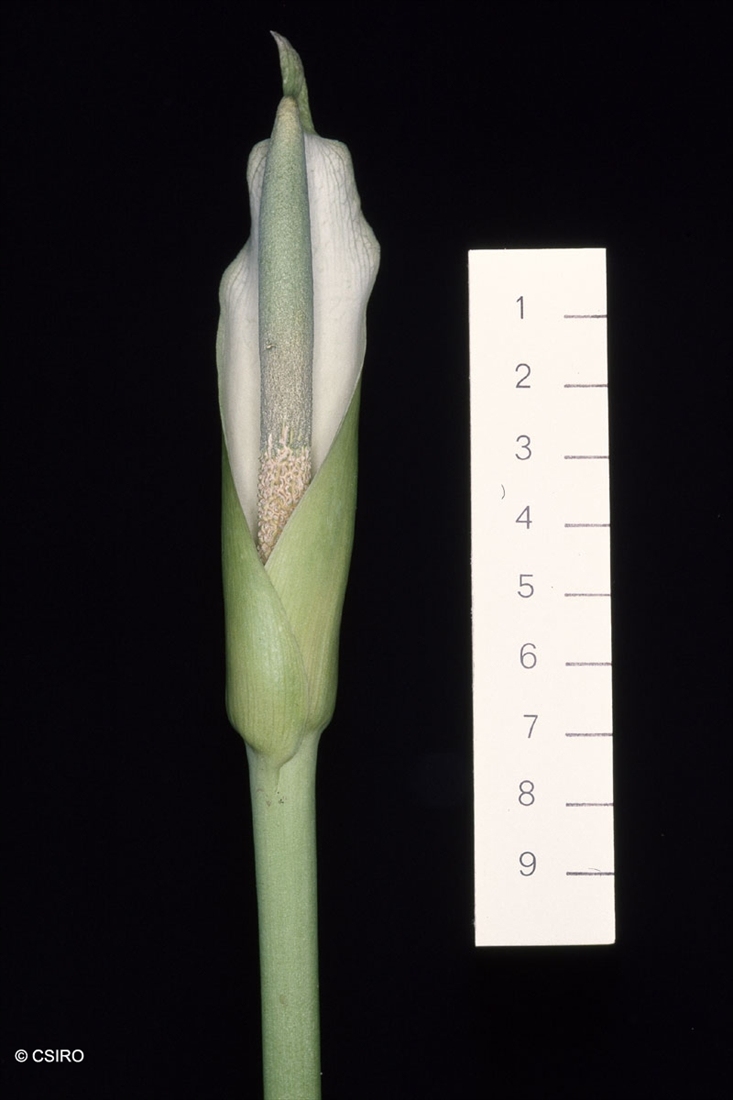

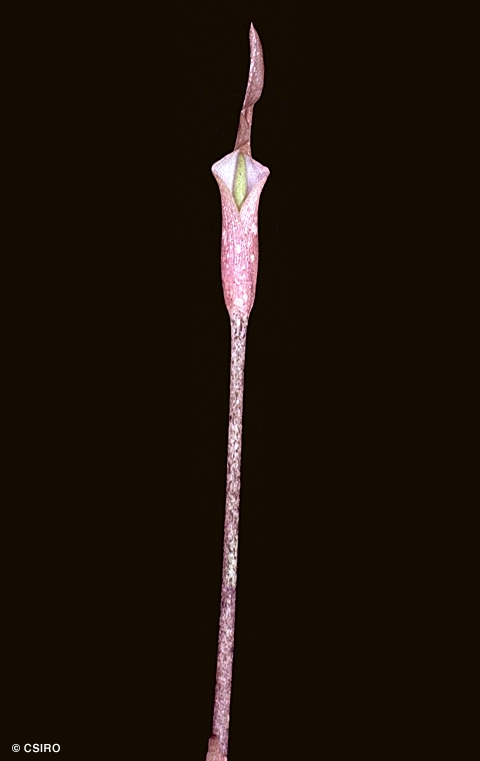
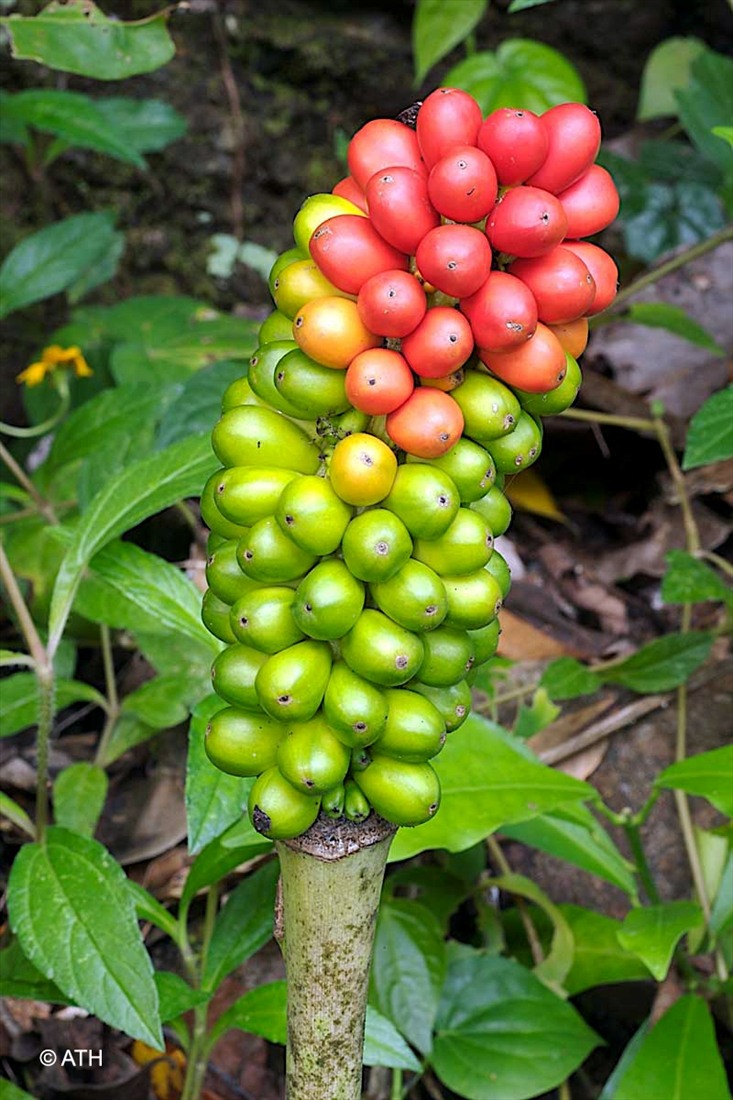
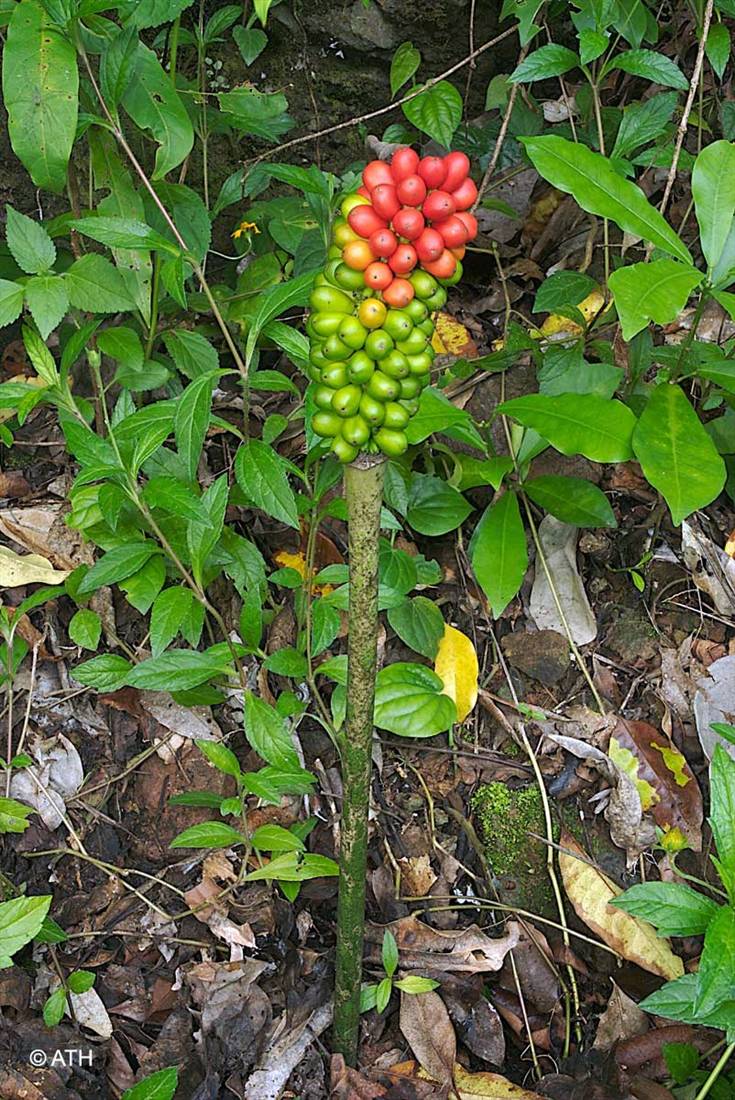
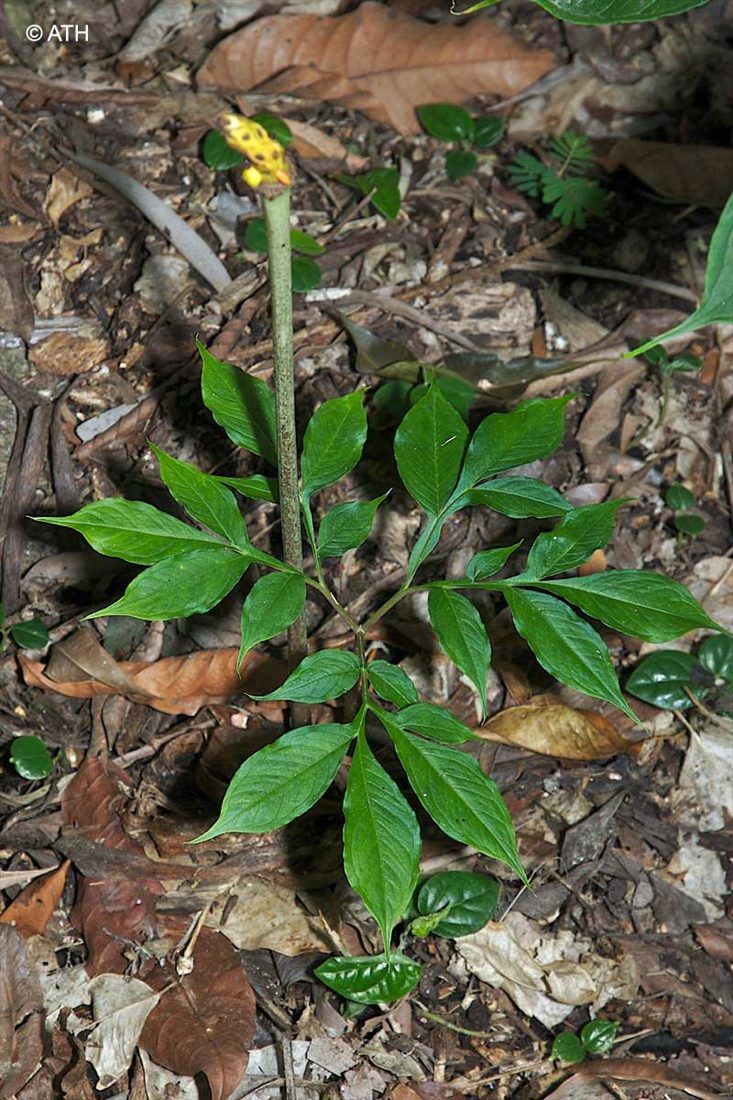

Bailey, F.M. (1893) Queensland Department of Agriculture and Stock. Botany Bulletin 7: 68. Type: Queensland, Barron River, and known, according to Mr. E. Cowley, by the name of Galbra Holo: BRI?.
Cheeky Yam; Sweet Snakeskin Lily
Essentially a large herb with the perennating bud attached to a tuber below the surface of the ground. However, the leaves and flower stalks can exceed 1 m in height.
Leaves +/- compound with the main rhachis divided into three branches which are again divided and produce leaflets. Petioles about 30-100 cm long. Leaflet blades about 10-20 x 3-5 cm, oblong elliptic to ovate. Leaflets sessile on the rhachis, usually with one decurrent wing. Lateral veins 13-20, strongly looping. Apex acuminate.
Usually flowering before the leaves are produced. Flowers borne on a spike which is more or less enclosed in a greenish or mottled bract (spathe). Female flowers produced towards the base of the spike with the male flowers on a separate section immediately above it with the uppermost section of the spike being sterile. Peduncle about 30-60 cm long.
Fruits produced in spikes which are often quite short and resemble heads. Individual fruits ellipsoid to globular, about 12-16 x 10-12 mm. Seeds almost as large as the fruits. Stigma persistent at the apex. Embryo equipped with a small lump which protrudes through on the surface of the testa. A number of scale-like layers are visible (beneath this lump) in longitudinal sections.
Features not available.
Occurs in WA, NT, CYP and NEQ. Altitudinal range from near sea level to 500 m. Grows in beach forest, monsoon forest, gallery rain forest and some of the drier types of rain forest. There is some evidence that populations of this species are adversely affected by wild pigs digging up and eating the tubers. Also occurs in New Guinea.
Some taxonomists have concluded that F.M. Bailey really meant the specific epithet to be 'glabra' (i.e. hairless). However, E. Cowley, the man who collected the type specimen, recorded the fact that the aboriginal name for this plant was 'galbra'. It was therefore Bailey's intention that the specific epithet be 'galbra'.





